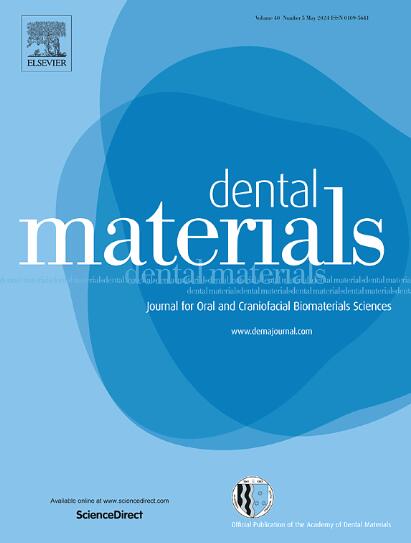牙科粘合剂的演变:从蚀刻-冲洗到通用粘合系统。
IF 4.6
1区 医学
Q1 DENTISTRY, ORAL SURGERY & MEDICINE
引用次数: 0
摘要
目的:本文综述了杂化层与牙本质粘连的机制和缺陷,材料科学的进展以及提高杂化层寿命的策略发展。方法:在PubMed、Scopus和Web of Science上检索相关文献,以牙基质结构、HL降解机制和策略等相关关键词进行对比。结果:尽管牙科材料的性能有了很大的进步,但HL的降解仍然是粘接牙科的一个相关和当前的问题。然而,粘接剂材料已经变得更耐腐蚀,操作人员对粘接剂的敏感度降低,良好的粘接性目前掌握在每个从业人员手中。许多新的策略正在开发中,能够提高粘合剂树脂的降解能力,它们渗透和化学结合到牙本质的能力,去除HL内未结合/残留的水,增强牙本质胶原基质,抑制内源性金属蛋白酶。许多策略都转向自然,寻找强大的生物修饰化合物,并模仿自然发生的再生过程的灵感。意义:对牙基材结构和牙本质粘附复杂性的广泛了解导致了牙胶粘剂配方的改进和许多有效策略的发展,以提高HL的强度和寿命。然而,对他们中的许多人来说,从长凳到椅子的道路似乎仍然很长。我们鼓励从业者充分了解他们的材料,并使用他们可以随时获得的策略。本文章由计算机程序翻译,如有差异,请以英文原文为准。
The evolution of adhesive dentistry: From etch-and-rinse to universal bonding systems
Objectives
This review aimed at presenting the mechanisms and pitfalls of adhesion to enamel and dentin, advances in the materials science and in the development of strategies to improve hybrid layer (HL) longevity.
Methods
Search of the literature was performed on PubMed, Scopus and Web of Science with keywords related to the structure of the dental substrate, HL degradation mechanisms and strategies to contrast them.
Results
Albeit the advances in the dental materials’ properties, HL degradation is still a relevant and current issue in adhesive dentistry. However, adhesive materials have become more resistant and less operator sensitive, and good adhesion is currently in the hands of every practitioner. Numerous novel strategies are being developed, able to improve the resistance of adhesive resins to degradation, their ability to infiltrate and chemically bond to dentin, to remove the unbound/residual water within the HL, reinforce the dentin collagen matrix, and inhibit endogenous metalloproteinases. Many of the strategies have turned to nature in search for powerful biomodifying compounds, and for the inspiration as to mimic naturally occurring regenerative processes.
Significance
Extensive knowledge on the structure of the dental substrate and the complexity of adhesion to dentin has led to the development of improved formulations of dental adhesives and numerous valid strategies to improve the strength and longevity of the HL. Nevertheless, for many of them the road from bench to chairside still seems long. We encourage practitioners to know their materials well and use the strategies readily available to them.
求助全文
通过发布文献求助,成功后即可免费获取论文全文。
去求助
来源期刊

Dental Materials
工程技术-材料科学:生物材料
CiteScore
9.80
自引率
10.00%
发文量
290
审稿时长
67 days
期刊介绍:
Dental Materials publishes original research, review articles, and short communications.
Academy of Dental Materials members click here to register for free access to Dental Materials online.
The principal aim of Dental Materials is to promote rapid communication of scientific information between academia, industry, and the dental practitioner. Original Manuscripts on clinical and laboratory research of basic and applied character which focus on the properties or performance of dental materials or the reaction of host tissues to materials are given priority publication. Other acceptable topics include application technology in clinical dentistry and dental laboratory technology.
Comprehensive reviews and editorial commentaries on pertinent subjects will be considered.
 求助内容:
求助内容: 应助结果提醒方式:
应助结果提醒方式:


